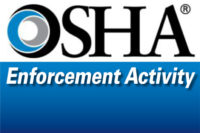Providing a safe and healthy work environment for employees should be at the top of the list for you as an employer. Did you know a common denominator of the top ten most dangerous jobs in the U.S. is working outdoors? In some types of work, danger is a part of the job description, but being outdoors on a daily basis lends itself to less obvious risks that still can have potentially deadly threats.
Outdoor workplace exposes employees to increased sun exposure, infectious insects and poisonous plants where susceptibility is much higher. Education about these concerns and protection against them are simple safeguards that are encouraged by OSHA.
So how are you protecting your outdoor workers?
Sun
Reduce your employees risk by incorporating the best skin protection program. Sun exposure is the primary cause of skin cancer today and with one million individuals in the U.S. being diagnosed each year, it is imperative outdoor workers be properly protected. Melanoma, the most serious skin cancer, accounts for more than 75 percent of skin cancer deaths. Outdoor workers receive 5 to 10 times more UV radiation exposure than indoor workers, significantly increasing their risk of developing skin cancer. All skin types may be damaged by exposure to UV radiation and this damage is permanent, irreversible and increases with each exposure.
Infectious insects
Arm your employees with the proper defense. Zika virus, West Nile virus and Lyme disease are all spreading quickly and becoming a serious concern. Infectious insects such as mosquitoes and ticks have the potential to be carriers of these devastating diseases. One simple bite may transfer a disease-causing agent, such as a parasite, bacterium, or virus. The infected individual may experience general malaise with non-specific symptoms ranging from mild to severe. Not only does this result in the loss of work but if not treated properly, it can have a detrimental effect to the body. Other than the typical bullseye mark associated with Lyme disease, both Zika and West Nile viruses may go undetected. Those infected could potentially be carriers of the disease without even knowing it.
Plants
Guard your workers against poisonous plants. Poison ivy is the name commonly used when speaking of several different species of the sumac family that include poison ivy, poison oak and poison sumac. Each year, these plants cause almost two million cases of dermatitis. They release an oil – urushiol -- when the leaf or other plant parts are bruised, damaged, or burned. When the oil gets on the skin an allergic reaction occurs and causes itchy red rash with bumps or blisters. Even a minute amount of urushiol, less than a gram of table salt, will cause a reaction in 80-90 percent of individuals.
Your employees are your biggest asset and protecting them should be your number one concern.



